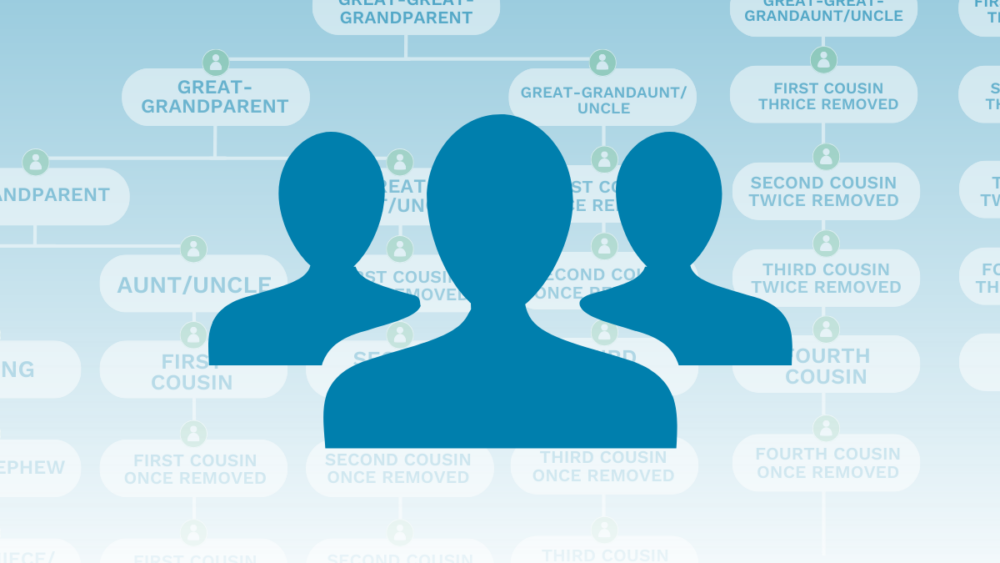The difference between second cousins and cousins once removed

Remembering the difference between a “second cousin” and a “cousin once removed” is one of those facts that I have filed away in my brain as non-essential. I think I know the difference, but then I get fuzzy on the details.
So, we did some research to figure out exactly how to count cousins and turned it into the handy chart below. If you have a family reunion coming up, you’ll want to save this and print it out!
Remembering what my mom’s cousin’s children are in relation to me is always a tricky one. Using this chart, I can see that they are my second cousins. And their kids? My second cousins once removed. Their kids? Second cousins twice removed.
MORE: Taylor Swift is related to poet Emily Dickinson
Once Removed—What Does It Mean?
The chart gives us a visual depiction of what “once removed” really means. It’s easy to see that you and all of your cousins — even those second and third cousins — are in the same generation. But when you get into different generations, that’s when it becomes “once” or “twice” removed — what that really means is one generation removed, according to the chart.
MORE: 12 gorgeous ‘Granny Pods’ to keep aging family members close
“For example, your mother’s first cousin is your first cousin, once removed. This is because your mother’s first cousin is one generation younger than your grandparents and you are two generations younger than your grandparents,” according to Genealogy. “This one-generation difference equals ‘once removed.’ Twice removed means that there is a two-generation difference. You are two generations younger than a first cousin of your grandmother, so you and your grandmother’s first cousin are first cousins, twice removed.”
If you need to get your brain to stop spinning, just look back up at the chart. It will help you understand.
So there you have it. You’ll never be cousin-confused again — or if you are, just refer to them all as cousins and call it a day!
Why Are We So Interested In Our Roots?
There are seemingly dozens of websites and services you can use to trace your family’s history — we’ve all heard of Ancestry.com and 23andMe. But why are we so fascinated with our family trees?
Scientists say we have an instinctual urge to learn more about our family members because we share the same genes.
The deep-rooted interest in our ancestry is partly shaped by evolutionary forces, Beverly Strassmann, a University of Michigan anthropologist, told LiveScience. Humans care about family members because they share some of our genes.
“People can pass on their genes either by having their own offspring or by helping their kin to reproduce,” Strassmann said.
In other words, there’s a reason all your relatives ask incessantly about your love life or when a baby will come into the picture — and that reason is biology.
MORE: 10 best US cities for a family vacation, according to family travel pros







